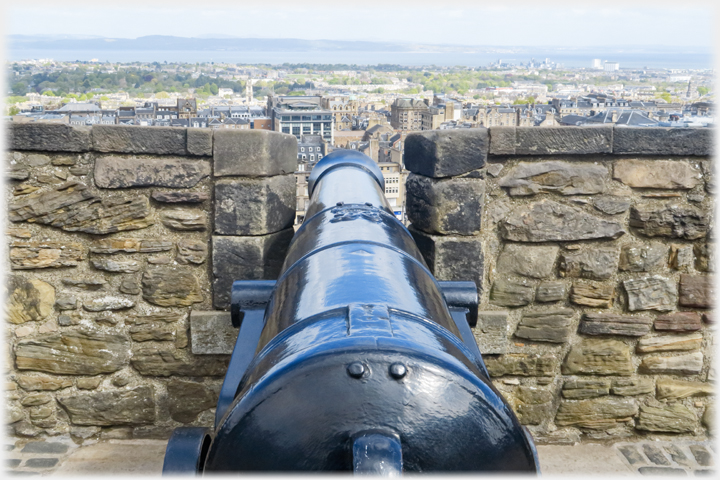 One of the cannons on the Argyle Battery at Edinburgh Castle, looking north across the
One of the cannons on the Argyle Battery at Edinburgh Castle, looking north across the
city towards the Firth of Forth Cannons seem to be a dominant theme in Edinburgh Castle. There are two main arrays of them pointing south and east on the Half Moon Battery, and north-east on the Argyle Battery. There is also the famous 'One O'Clock Gun' on Mills Mount Battery, as well as the mighty Mons Meg. So many cannons are not surprising as it was very much a working castle for a major part of its life. The cannons you see, however, were only introduced in the 1800s, and reportedly were retrieved from navy vessels. This followed a visit from Queen Victoria who felt that a castle without cannons was not right. Those three batteries are shown below and the page ends with portraits of one of the world's more famous guns - Mons Meg. The cannons offer the excuse for more of the spectacular views that the Castle affords.
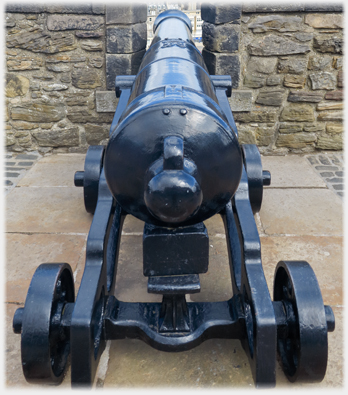 The rear of the cannon in the top photograph
That cannon's view of the north side of the city
The rear of the cannon in the top photograph
That cannon's view of the north side of the city
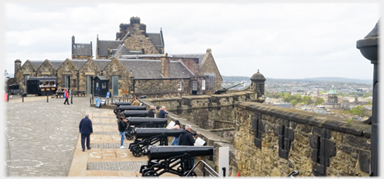 The Argyle Battery with the Cartshed Cafe beyond
The Argyle Battery with the Cartshed Cafe beyond
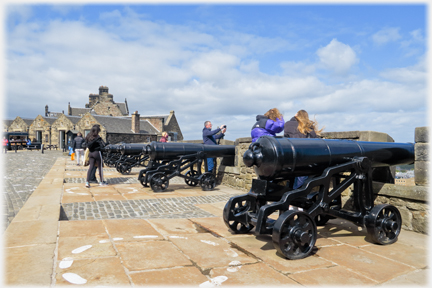 The white pecked circles are to indicate how groups of...
The white pecked circles are to indicate how groups of...
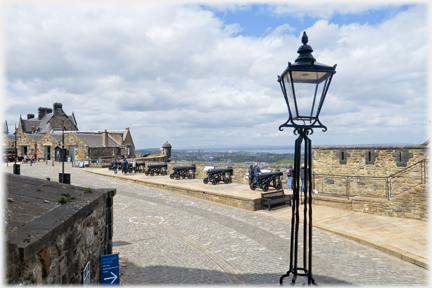 ...people are to keep separate in this time of Covid
...people are to keep separate in this time of Covid
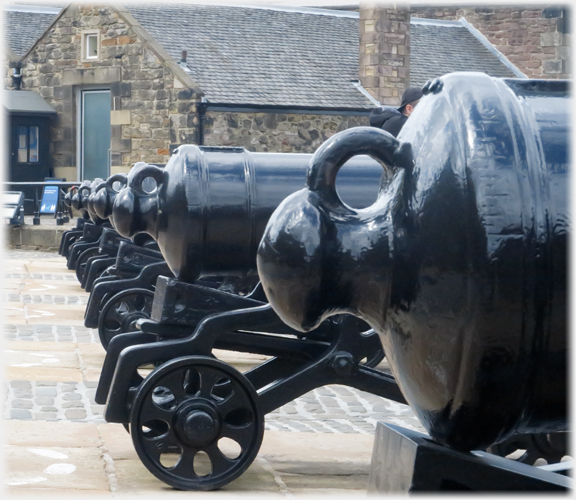 Cannons as aesthetic objects
Cannons as aesthetic objects
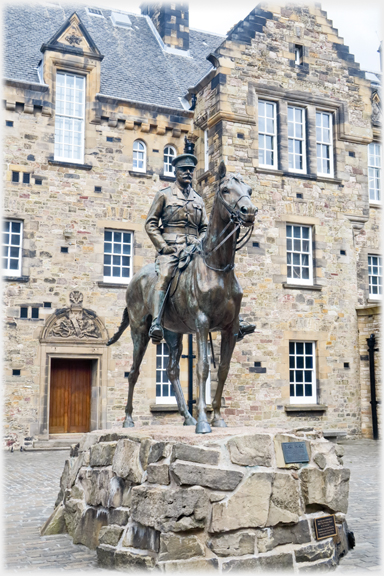 An aside on the military theme, by Butts Battery, is this statue of General Haig standing in front of the hospital building. It was moved here in 2011
An aside on the military theme, by Butts Battery, is this statue of General Haig standing in front of the hospital building. It was moved here in 2011
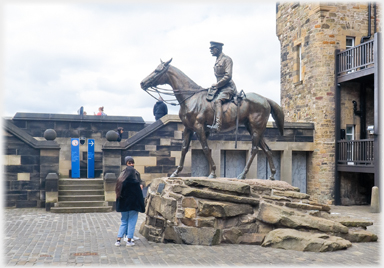 Beyond the Haig statue is Butts Battery
Beyond the Haig statue is Butts Battery
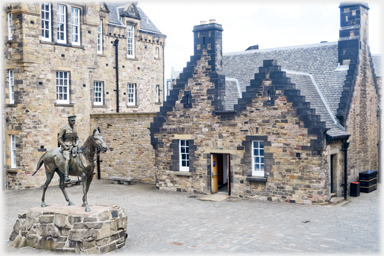 The impressive, if hyper-realistic, statue was given to the City by the philanthropist Dhunjibhoy Bomanji in 1923. The sculptor was George Edward Wade
The impressive, if hyper-realistic, statue was given to the City by the philanthropist Dhunjibhoy Bomanji in 1923. The sculptor was George Edward Wade
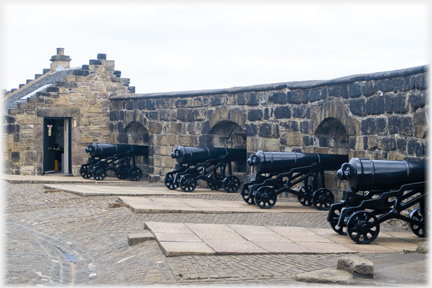 The third and highest battery is named from its shape
The third and highest battery is named from its shape
- Half Moon Battery. The loopholes being...
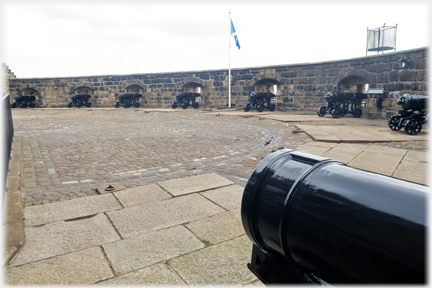 ...set in the squat round tower which sits over the entrance.
...set in the squat round tower which sits over the entrance.
It can be seen in the heading photo on the last page
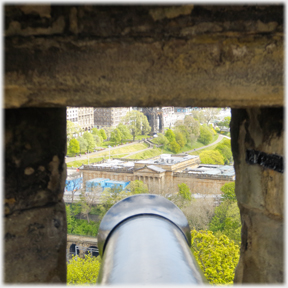 The National Gallery
The National Gallery
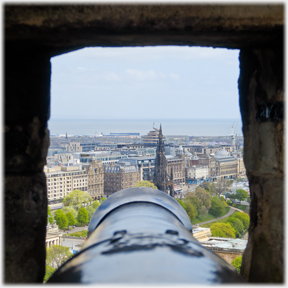 The Scott Monument
The Scott Monument
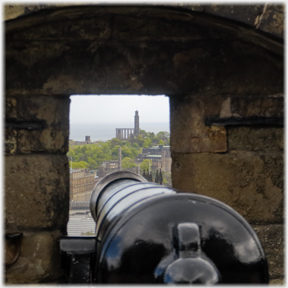 Calton Hill
Six views from those loopholes; each cannon's eye on some famous Edinburgh landmark
Calton Hill
Six views from those loopholes; each cannon's eye on some famous Edinburgh landmark
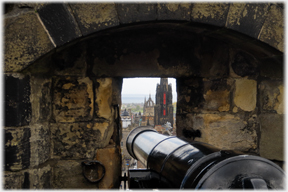 St. Columba's Kirk
St. Columba's Kirk
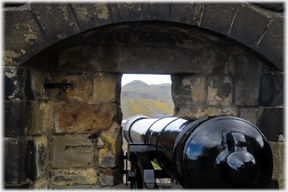 Arthur's Seat
Arthur's Seat
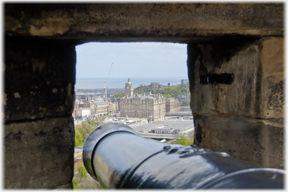 North British Hotel
North British Hotel
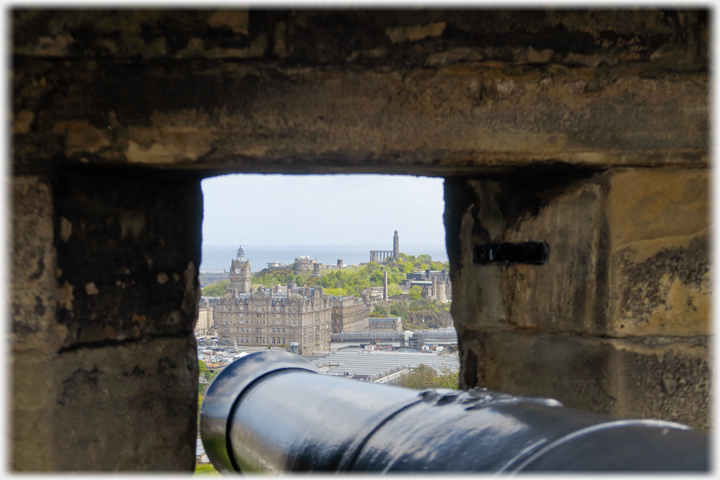 A view worthy of enlargement: the North British Hotel (now under the misnomer of Balmoral) and Calton Hill with its Observatory and Folly
A view worthy of enlargement: the North British Hotel (now under the misnomer of Balmoral) and Calton Hill with its Observatory and Folly
 From a nineteenth century cannon to its modern equivalent: the 'One O'Clock Gun'
From a nineteenth century cannon to its modern equivalent: the 'One O'Clock Gun'
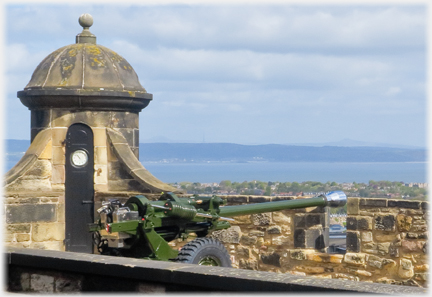 Above, the 105mm gun which was developed in the 1970s. Wikipedia says it is a howitzer L118 Light Gun. Behind the gun is the precision chronometer that times the firing...
Above, the 105mm gun which was developed in the 1970s. Wikipedia says it is a howitzer L118 Light Gun. Behind the gun is the precision chronometer that times the firing...
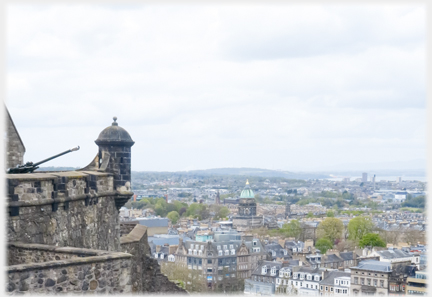 ...This firing is now a ritual, but when it started in 1861 it had a serious purpose: to let shipping, in the Leith area, set their own chronometers, hence one firing at 1 pm exactly
...This firing is now a ritual, but when it started in 1861 it had a serious purpose: to let shipping, in the Leith area, set their own chronometers, hence one firing at 1 pm exactly
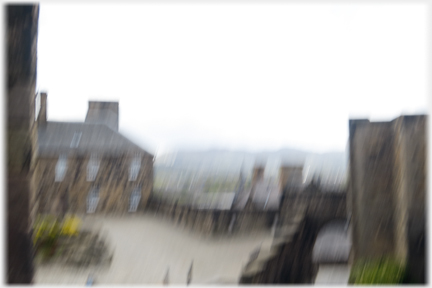 This photograph was taken at precisely 1pm on the day of my visit to the Castle...
This photograph was taken at precisely 1pm on the day of my visit to the Castle...
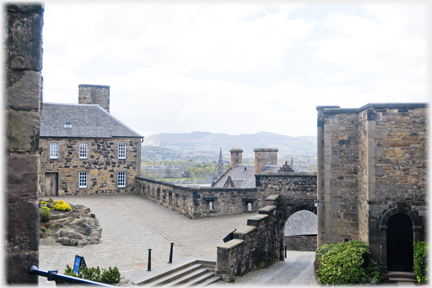 ...and this one was taken at a few seconds past 1pm
...and this one was taken at a few seconds past 1pm
- it being the photograph I had intended!
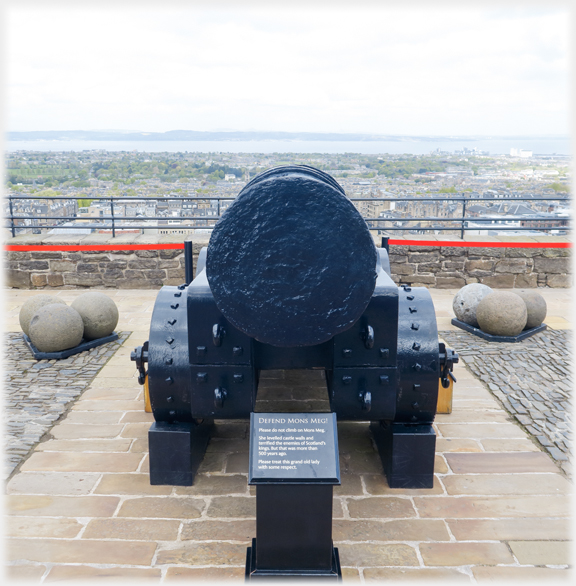 Possibly the world's most famous cannon, Mons Meg weighs 6 tonnes. Moving her was a major problem, progress, accomplished by a team of oxen,
Possibly the world's most famous cannon, Mons Meg weighs 6 tonnes. Moving her was a major problem, progress, accomplished by a team of oxen,
was restricted to 3 miles a day
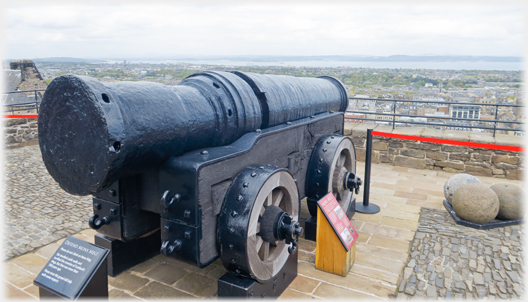 Named after the town in Belgium in which it was made, it was a gift to James II of Scotland in 1457
Named after the town in Belgium in which it was made, it was a gift to James II of Scotland in 1457
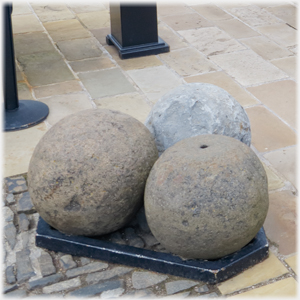 These are the 150kg stones that it could fire for a distance of two miles (3.2 km)
These are the 150kg stones that it could fire for a distance of two miles (3.2 km)
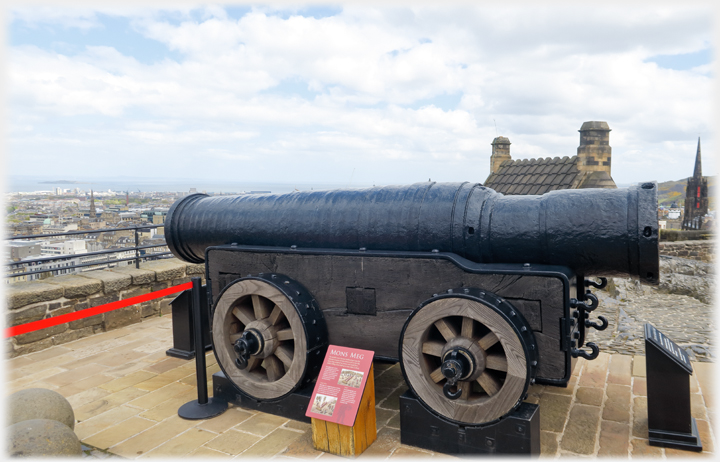 It was retired from active service in 1550, although used for ceremonies such as the marriage of Mary Queen of Scots in 1558. Its last such use was in 1681 when the barrel split.
It was retired from active service in 1550, although used for ceremonies such as the marriage of Mary Queen of Scots in 1558. Its last such use was in 1681 when the barrel split.
So ends the story of many cannons... Trailers...
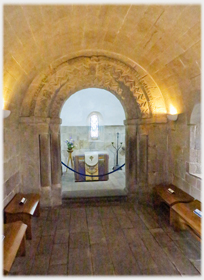 The next
Picture Posting page goes inside two Edinburgh Castle buildings: St. Margaret's Chapel (pictured) and the Great Hall
The next
Picture Posting page goes inside two Edinburgh Castle buildings: St. Margaret's Chapel (pictured) and the Great Hall
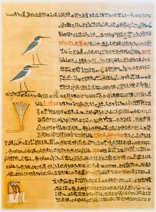 The next page
of the Mosaic Section is headed 'Writing as Reminder'.
The next page
of the Mosaic Section is headed 'Writing as Reminder'.
Or go to the contents Go to the contents of the Mosaic Section. of the Mosaic Section.

 The last page gave a brief tour of the inside of the Castle
The last page gave a brief tour of the inside of the Castle
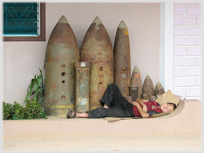 A single photo of more modern weapons on a page about Laos
A single photo of more modern weapons on a page about Laos
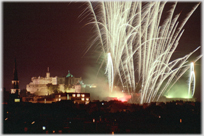 The Castle illuminated by controlled explosions - the annual firework display
The Castle illuminated by controlled explosions - the annual firework display
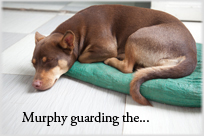 ...guide to this site
...guide to this site